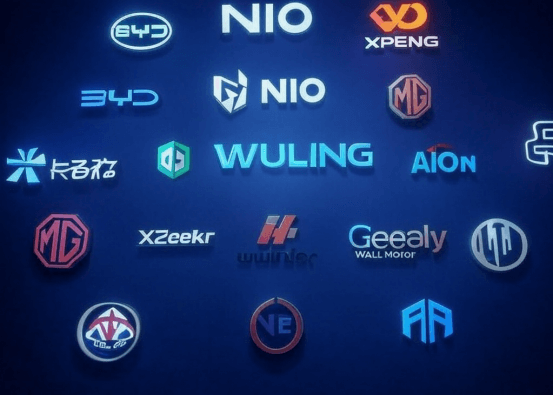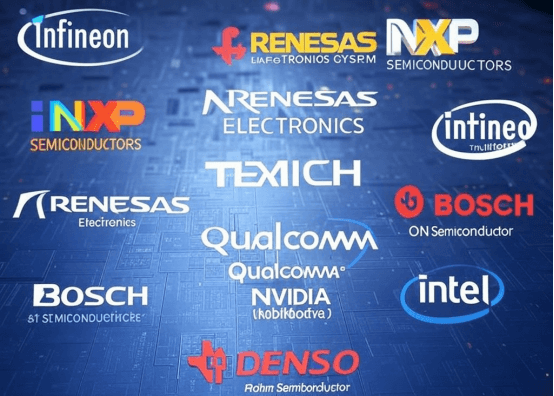North American Auto Industry — Chip Shortage or Chronic Disease?
A crowd watches the electronic side mirror on a new electric pickup flutter open and shut like a broken wing at the North American Auto Show in February 2025. "It's a contact glitch from the chip shortage," the engineer on duty mumbles, his cheeks flushed. This stilted performance serves as a metaphor for the broader automotive industry — one in which the prospect of putting to end the chip crisis stumbled yet again in Q1 2025.
The Chip Shortage Is Now in Its ‘Third Act'
American dealerships are still facing turnover at a rate of 45 days in January 2025 — twice the average pre-pandemic, according to The Wall Street Journal. Over the assembly line at GM's Detroit plant hangs a sign: "37 days until chips arrive." It's the third time in as many months that the countdown has been reset. "It's like a drone indefinitely playing Tetris with no win screen," assembly supervisor Maria Gonzalez tells Automotive News, her voice thick with exhaustion.
What started in 2022 is now a chronic pain." A Boston Consulting Group report said that global automotive chip orders were only 68% filled in the fourth quarter of 2024, a 7 point slip from 2023. That slide sent analysts into a tizzy, especially with TSMC's new Arizona fab just having come online. "The new capacity was consumed by AI chips," TSMC's chief executive, C. C. Wei, said on an earnings call. Because of shortages, automotive chips have dropped from third place to fifth on the fab schedule.
The Supply Chain's "Death Cross”
Later in February 2025, Tesla's Texas Gigafactory runs into a surreally juvenile situation: Model Y production suddenly stops, when it's revealed that the $3 car MCU chip, the brains of the operation, is no-where to be found for the factory line that produces 7,000 Model Ys a month, even as a small fortune's worth of $7 FSD V12 autonomous driving chips sit unused in a neighbouring storage center. It's an extreme example of what McKinsey calls a "death cross" — where the demand for new technology goes up against the shortage of its building blocks.
We're caught in a vise," Jim Farley, Ford's chief executive, says on CNBC, hands outstretched. "Buy demand is smarter infotainment, at lower prices, but supply chain just won't bend that way." That strain burst open in January 2025: GM was forced to put cut-rate chips in the Chevy Bolt, which resulted in software crashes, while Rivian lifted the R1T's entry price to $89,000 to keep up its premium chip specs.

China's EV "Dimensionality Reduction Attack”
Then we have reports of Chinese EVs flooding the market at the same time North American car makers are suffering shortages, with sales hitting a 15%-per-month climb. (A CHINA AND FAREWELL BYD EV Then by January, 30% of EV production ended up exported, according to the China Association of Automobile Manufacturers (CAAM), while the following month, 70,000 BYDs sailed away from China's shores, a 91% increase compared with the same month a year earlier. Their secret weapon? Chips that beat expectations, somehow.
“Morons are getting 90% of our 7nm performance from GN28 tech," one Big Three engineer tells Reuters on condition of anonymity. Horizon Robotics Journey 5 chip, built on more antiquated processes, comfortably beats Tesla's FSD chip on efficiency. Determined to add insult to Detroit's injuries, Chinese automakers have secured stable chip flows thanks to close ties to SMIC, leaving U.S. adversaries scrambling.
People on the "Binged Self-rescue Movement”
The car junkies rally on Facebook with a pinned post titled "Chip Survival Guide." User
Tip from @CarLover99 — "Buy a base model now, upgrade later" — gets 23,000 shares. The manner in which Tesla locked hardware inside its cars and subsequently activated it through software became a salva for the entire industry.
The used car market, however, is a carnival. February 2025, CarMax: A 2023 Toyota RAV4 Prime drives off the lot with a $58,000 bill — 17 percent over MSRP. "Better than Bitcoin," the dealer Jason Miller joked on CNBC. A new class of "chip hunters" has emerged, hunting down anything that's out-of-date near and dear; a 2018 NXP MPC5744P currently trades for $300 on the black market.
Darkness Before the Dawn
In Arizona's blazing desert, Intel's $20 billion fab cranks on all day—but its rainmakers are artificial-intelligence chips, not automotive chips. "Car companies need to prove their ROI," Intel's fab chief says. Stellantis, frustrated, wants to construct its own chip packaging plant; GM agrees to a 10-year deal with GlobalFoundries.
But beneath the strain, flickers of ingenuity emerge. Mobileye's "software-defined hardware” allows algorithms to compensate for chip limitations. "The chips with crutches, it's like putting together," muses Susan Hockfield of M.I.T. As always the entertainer, Elon Musk proposes a crazier idea on X: using Starlink to teleport computing power straight to vehicles.

Conclusion
Now, spring 2025: at the conclusion of this four-year chip ordeal, the automakers' center of gravity has mated. "The era of the 2,000-chip car is over," says Consumer Reports editor Jake Fisher. While you may think of it more as a namaste pose for the industry, this supply crisis might well end up being the deep, painful stretch — as electrification and intelligence ascend — that enables a leaner, meaner new era.
